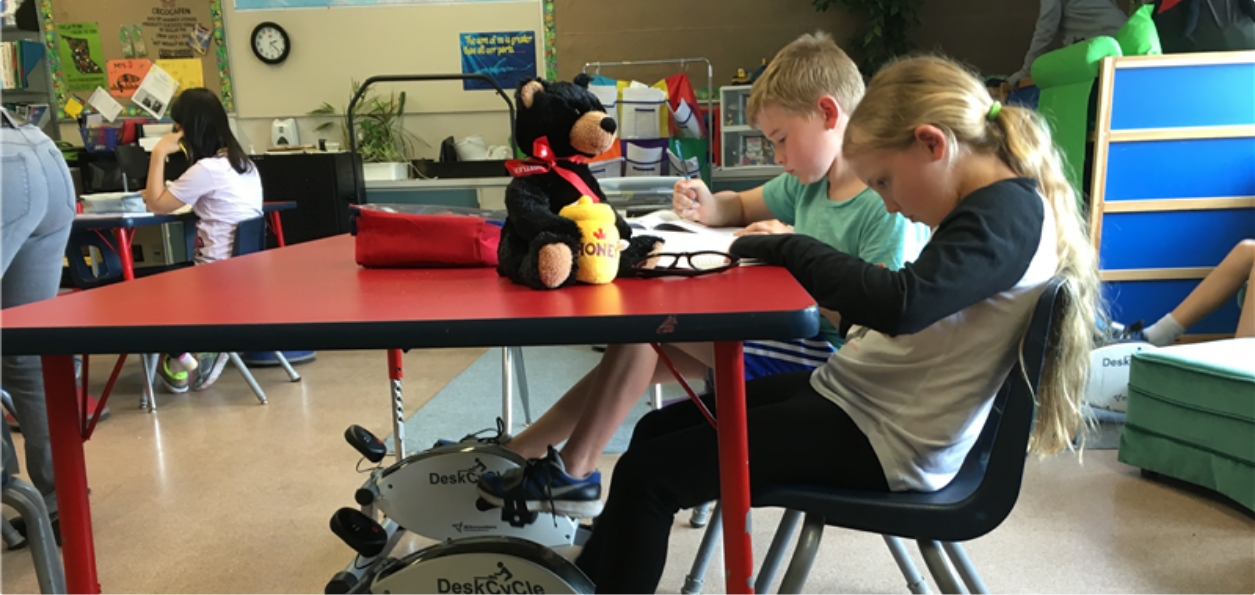I became interested in increasing the fitness and activity levels of students after noticing that many students in my grade 4 class were not able to comfortably go for a moderately long hike on the beach dyke adjacent to our school without experiencing extreme fatigue. After returning to school, they were even less able to engage in the learning process due to this lack of overall fitness. This was surprising because I had originally thought that the fresh air and exercise should have made them more able to engage in learning.
Can regular, frequent physical activity breaks throughout the learning day increase student fitness and engagement in learning?
I implemented regular, daily brain breaks through out the learning day where students were able to use the classroom fitness equipment as well as go for short runs around the perimeter of the school to increase their stamina and overall fitness. Students who didn’t wish to run could choose skipping as their brain break.
We also purchased three stationary bicycles (desk cycles) for use in our classroom. This equipment was added to our existing classroom equipment (a high-quality fitness trampoline and skipping ropes).
Students were encouraged to self-regulate their brain breaks and make use of the equipment when they most felt the need.
The assessment tool we used was Google Forms. With teacher support, the class used Google Forms to design a fitness survey, which each student responded to. The results indicated an overwhelmingly positive response in favour of the using of the desk cycles as an aid to learning in the classroom. For example, one of the questions asked was:
Do you think having the desk cycles helps your learning?
The majority of student responded favourably to this question. Some of the typical responses were:
“Yes I do because you can move and you don’t get that “I want to move” feeling.”
“Yes because it gets my energy out”.
“Yes because they help you calm down”.
“Yes because it helps me focus.”
“I think it helps because it is calming and relaxing to pedal”.
“Yes, I can concentrate better.”
“Yes because I am moving and I like to move.”
As we move forward with the new curriculum in British Columbia and support students in their ability to self-regulate and be more aware of themselves as learners, it seems clear that kinesthetic learning is a critical component for many students to experience success. Desk cycles were a very welcome tool in our classroom that provided healthy, active movement while still allowing the user to focus on academic tasks. Because of their almost silent nature, other students were able to focus on their own learning without distraction. The desk cycles are only one aspect of the changes that have occurred in my classroom in recent years. A mini-trampoline, exercise discs, hokki core balance stools and giant beanbag chairs are other examples of the sensory equipment that have been incorporated into the learning environment. Removing the desks in favour a table to support cooperative learning five years ago was the beginning of this journey and required a big leap of faith. I can’t imagine going back to those desks and a traditional classroom now!
